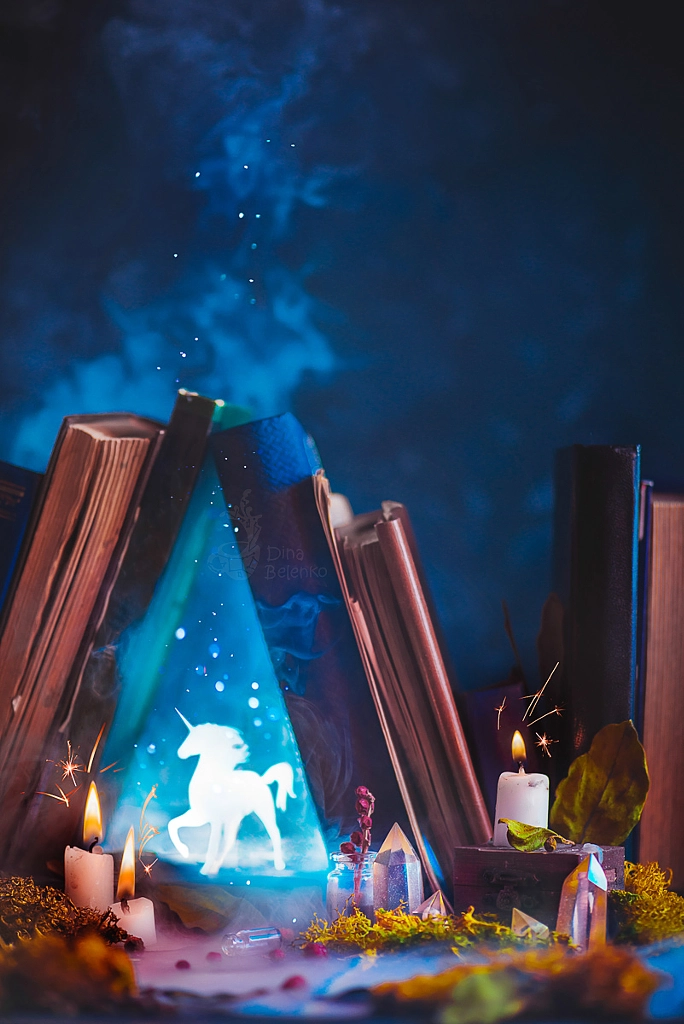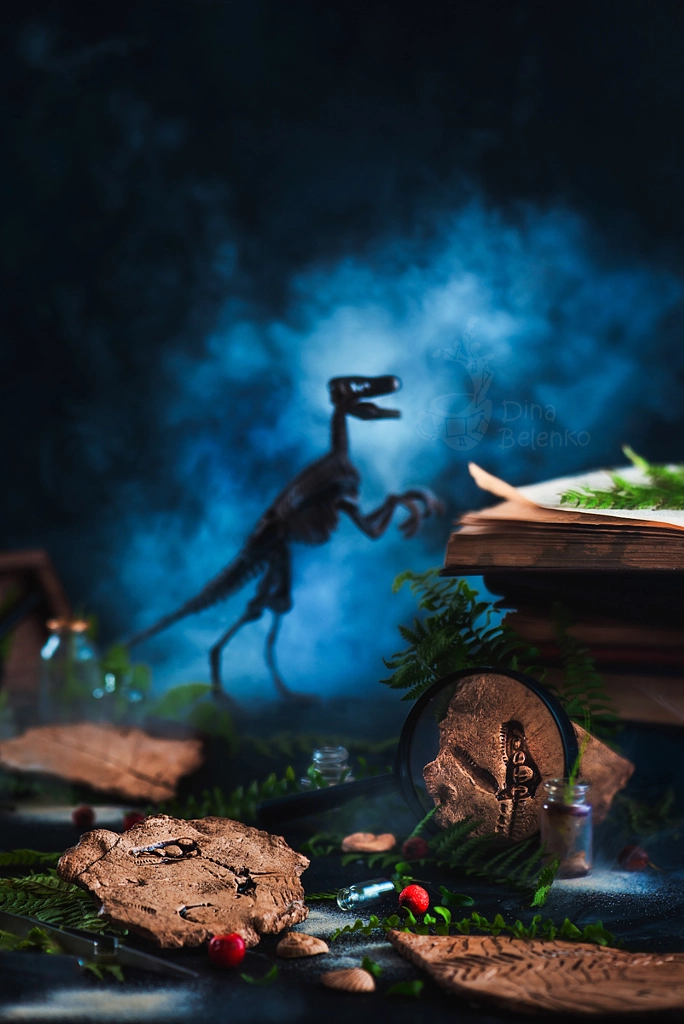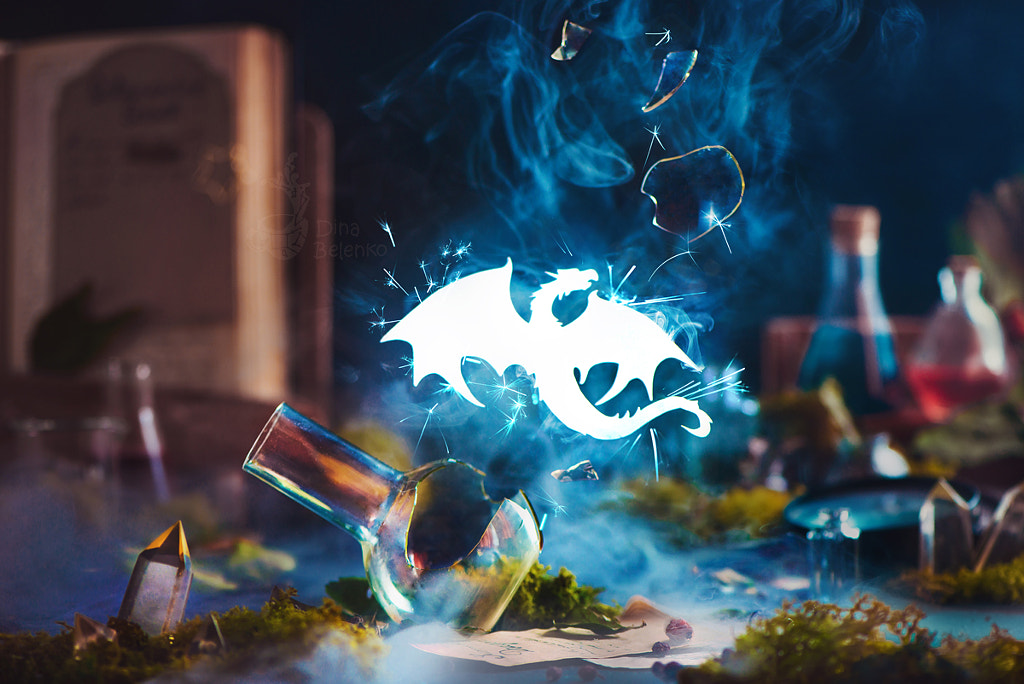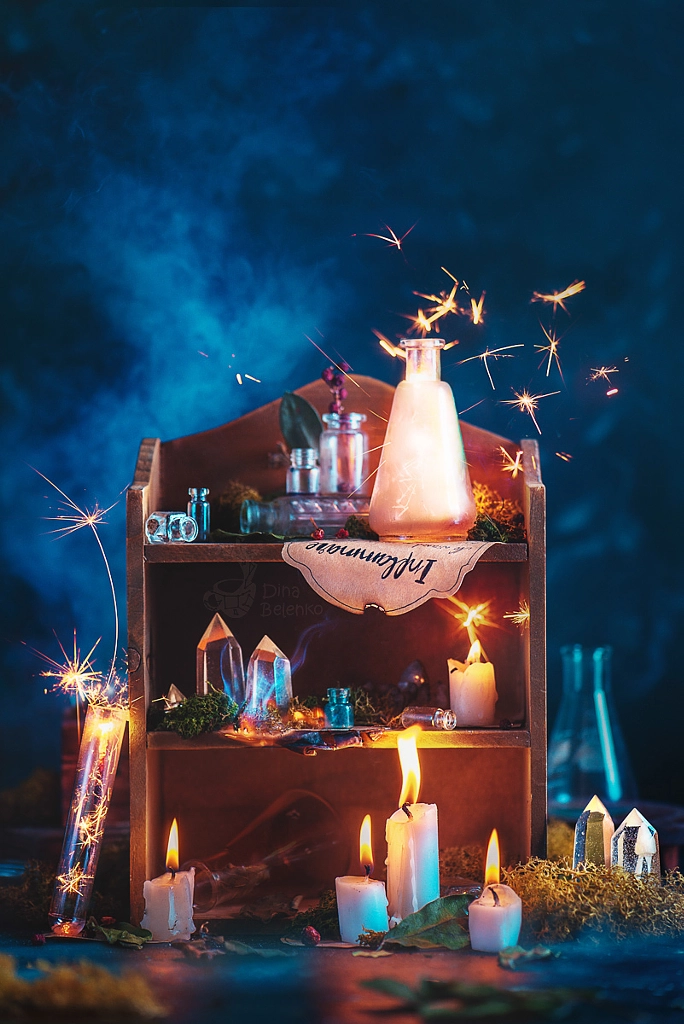Pictures are way more expressive than the words. And every picture has a story. Here you will find the amazing pictures which i click in my day to day life and the story's behind it.
Search This Blog
Wednesday 31 October 2018
Video: What Makes the Nikon Z7 Viewfinder so Special?
from The Phoblographer https://ift.tt/2QaraTP
Couple Dies After Falling Off of Same Cliff in Viral Yosemite Photo
The Yosemite cliff that served as the location of a now-viral marriage proposal is now also the location of a tragedy involving photography: A selfie at the same cliff’s edge has led to the death of a young couple according to reports from the Associated Press.

Image via Pixabay from Pexels.com.
Husband and wife Vishnu Viswanath and Meenakshi Moorthy were visiting the same Yosemite cliff where a still-unknown couple proposed. The two tragically fell to their deaths after taking a series of selfies together and separately at the cliff’s edge.
A site popular with tourists, the Yosemite cliff has a 1000 feet or 300 meter drop and features no railing or guard whatsoever. The couple had set up a tripod to take some photos and fell off of the edge of the cliff as they were doing so according to witnesses present there on October 23.
Oddly, no one noticed them fall but one tourist may have captured Meenakshi Moorthy prior to her fall off of the cliff. Sean Matteson told the Associated Press, “She was very close to the edge, but it looked like she was enjoying herself…She gave me the willies. There aren’t any railings. I was not about to get that close to the edge. But she seemed comfortable. She didn’t seem like she was in distress or anything.”
The couple’s tripod was still at the site in the morning and tourists alerted authorities who began the search, scouring the area below the cliff's edge with high-powered binoculars. There, at about 800 feet below down the slope, the couple was found dead.
The couple were very active on social media according to PetaPixel and posted pictures from Yosemite on the day of their deaths.
Deaths by selfie and falling from high places while taking photos is unfortunately common according to research we told you about earlier this year. The phenomenon has even led to calls for more restrictive measures in places popular with photographers and tourists.
The post Couple Dies After Falling Off of Same Cliff in Viral Yosemite Photo appeared first on Light Stalking.
from Light Stalking https://ift.tt/2yRJ8nB
It Lives! Panasonic’s New 8K Camera First Ever with Internal Organic Image Sensor
If you want to see the future today, look towards what the big guys are developing for film and broadcast. The product of a recent partnership between Panasonic and Samsung gives us a small glimpse of that tech. And we could see it out in the field as soon as the next Olympic games.

Image via Panasonic.
Back in February, Panasonic announced it had developed an organic image sensor capable of taking 8K video at 60fps and which also featured a “global shutter.” Accomplished in coordination with Korean tech giant Samsung, the AK-SHB810 comes seven years after the tech underpinning it was first patented, according to DPReview.
The camera is a head unit that connects to an off board processing unit via fiber optic cable. The new device is expected to debut next year and, it is hoped, the new units will be ready for Tokyo 2020 when Japan hosts the Olympics. Not only is Panasonic positioning this as an ideal broadcasting tool but also the Olympics would be the perfect showcase for it. A press release referenced by DPReview also discussed using the camera for feature film production.
CMOS sensors work by using the silicone as the light sensitive medium with the readout rate determining the shutter speed, or, as DPReview succinctly puts it, “the separation of the light gathering function of the sensor from the readout process and its circuitry”. In organic image sensors these two processes are completely independent of one another. This prevents the “rolling shutter” effect that distorts images and makes it ideal for indoor sporting events without a lot of flash. The way the internal organic image sensor works, bright bands of light won’t occur because of the global shutter.
As you can imagine, being professional-grade equipment none of this is going to come cheap.
The post It Lives! Panasonic’s New 8K Camera First Ever with Internal Organic Image Sensor appeared first on Light Stalking.
from Light Stalking https://ift.tt/2zlu7tm
Yongnuo Joins Mirrorless Camera Wars
It was only a matter of time before the Chinese manufacturers started throwing down the gauntlet when it came to releasing their own hardware.
And Yongnuo looks set to be among the first.

Image via Yongnuo Facebook.
The mirrorless camera wars are about to get that much more real with Chinese accessories manufacturer Yongnuo joining the fray. Known for their lenses for Nikon and Canon, Yongnuo’s entry into the mirrorless segment is not really that surprising when you look at how the company has steadily built its portfolio over the years. The optical accessories company even took to Facebook to post the announcement. The company is also holding a naming contest for the new model, so you could potentially name the next great mirrorless camera.
In a design that looks like a combination of a smartphone with a Yongnuo YN 14mm f/2.8 lens attached to the front of it, the company hopes to combine the convenience of a smartphone camera with the capabilities of standalone mirrorless. It’s an awkward look, to be sure, but if it works well then it could really be a preview of things to come. After all, few devices for consumers outside of a smartphone sport a touchscreen of that size.
The two names for the model on offer are 4G Camera and Smart Camera, neither of which are terribly inspired but, hey, at least consumers get a vote on the matter. Both describe the niche the new camera is aiming for but neither really stand out in an already crowded market. Thankfully, if you think you have something better, Yongnuo is open to suggestions according to PetaPixel.
You can find out what name made it across the finish line in January 2019 when the new device officially debuts. You might want to vote in the contest – doing so could win you a Yongnuo YN 50mm f/1.8 lens for Nikon and Canon cameras.
Click on the link above to head on over to Yongnuo's Facebook page to find out the details surrounding the naming contest.
The post Yongnuo Joins Mirrorless Camera Wars appeared first on Light Stalking.
from Light Stalking https://ift.tt/2CT7JuN
XQD availability “held up by multiple parties including Sony” says Lexar
After Lexar’s Polish distributor announced that Lexar will no longer produce XQD cards in order to focus on CFexpress, Lexar has issued a further statement to Nikon Rumors. In the statement, they say that availability of XQD has been “held up by multiple parties”, specifically naming Sony. While Lexar is eager to pursue the XQD […]
The post XQD availability “held up by multiple parties including Sony” says Lexar appeared first on DIY Photography.
from DIYPhotography.net -Hacking Photography, One Picture At A Time https://ift.tt/2JxJEew
Street Photographer Asks Strangers What They Wish for in Life
As a street photographer, how far do you go to engage with strangers? Crash Taylor, currently a UK based photographer, not only asks strangers to pose for a portrait but also asks to reveal their deepest wish. Find out how he does it!
[ Read More ]
from Fstoppers https://ift.tt/2yMqDAJ
Dubble Celebrates First Birthday With the Super Colorful JELLY 35mm Film Emulsion
from The Phoblographer https://ift.tt/2Dg2TZI
Adobe Lightroom CC Mobile Long Exposure: Serious Creative Potential
With a show of hands, how many of you have practiced long exposure photography using your camera and some neutral density (ND) filters? Whoa, that's a lot! Now, how many of you have practiced this type of photography with your mobile phone?
[ Read More ]
from Fstoppers https://ift.tt/2Sy1pyd
Make the Right Choice: Everything You Need to Know About SSD, NVMe and Optane Drives
What are the differences between a traditional SSD and a NVMe drive? Should I upgrade to NVMe? Which model should I pick? What are the main specifications? What about the new Intel Optane? Here is a detailed explanation to understand the advantages, weaknesses, and differences of these storage technologies.
[ Read More ]
from Fstoppers https://ift.tt/2qjA4CW
DJI announces the Mavic 2 Enterprise with self-heating batteries
After having recently announced both the Mavic 2 Pro and Mavic 2 Zoom, DJI has now announced the new Mavic 2 Enterprise. DJI is turning the Mavic name from more being than just a single drone into a whole range of products focused on different tasks Despite the name, though, the Mavic 2 Enterprise is […]
The post DJI announces the Mavic 2 Enterprise with self-heating batteries appeared first on DIY Photography.
from DIYPhotography.net -Hacking Photography, One Picture At A Time https://ift.tt/2CUSbXl
Photography Nightmares: Professional Photographers Share Their Horror Stories on the Job
Lament a lowlife that lurches and lurks the local lanes, and I'll let loose a listless laugh. But tell me tales of a memory card formatting itself in the middle of a wedding and I'll hide behind the proverbial sofa, toes curled in fright.
[ Read More ]
from Fstoppers https://ift.tt/2yKs1DZ
Cheap Photo: Save Over $636 on a New Nikon D750 with Lens and Battery Grip, and 100s on Photography Accessories
from The Phoblographer https://ift.tt/2Q4hudo
Photographing The World 4 BTS Series Begins Now
We've been working on "Photographing The World 4 with Elia Locardi" for a year and a half, and it's finally complete. I'm excited to say that the tutorial is now available, and the first episode of the behind the scenes series is live as well.
[ Read More ]
from Fstoppers https://ift.tt/2JtAeR2
A Recipe for a Little Red Riding Hood Photo Shoot
For most kids, deciding what to wear for Halloween is an exciting time to make a yearly memory. This is no different for my own daughter. However, this year, she received her costume from a neighbor as a hand-me-down. The joy on her face was priceless! Now that she had her costume, it was my job as her father and photographer to make her look epic.
The outfit reminded me of an Adorama TV feature that Gave Hoey did years ago that also included the character of Red Riding Hood:
As I wanted to use this video as inspiration, but not copy, I choose not to simply review this photo rather than the entire video. This allowed me to make it my own style and look. In keeping with the season of yummy treats, I thought I would write this article in the style of a recipe. Enjoy!
Ingredients
Being a portrait photographer I had all the items I needed for this shoot. Which include:
Body: Canon 5D Mark III
Lens: Canon 85L 1.4IS
Speedlight: Canon 600ex-rt
Trigger: Canon ST-E3-RT
Modifier: Westcott 26″ Rapid box with beauty dish
Stand: Cheetah C10
Filter: Tiffin 6 Stop ND filter
Additional: Sand bags for support
Most importantly: One super cute and excited 7 year old ready to live a fantasy as Little Red Riding Hood.
Location
Living in the city, a nearby forest was hard come by. What I did have though was a city park with a line of trees rich in autumn. The shoot began 30 minutes before civil twilight which helped give a soft glow to the trees in the background. The ambient light was a bit bright when I opened up the lens completely so I used a 6 stop Neutral Density (ND) to compensate.
Oven Settings
I realize settings are dependent on the conditions and therefore will not apply to all circumstances, but you can use them as a guide. After all, you don’t want to over-cook your treat!
ISO: 100
Aperture: f1.6
Speed: 1/80th of a second (Image Stabilizer on)
Flash: Powered at 1/32 power about 4 to 6 feet away
Tip: As long as your ambient exposure is 1 to 3 stops underexposed and you compensate with flash power, you should be able to get the desired look. It’s really that simple!
Presentation
Honestly, I don’t watch a bunch of cooking shows, but I do know a great portrait has good composition. As you can see from one image above, soccer goal posts would have ruined the look. Thus, I placed my daughter in a line of trees that would give the viewer a sense that Little Red was in the woods off to grandmother’s house. My daughter, who loves posing and play acting took over and began to have fun. For a little extra flare my wife through some leaves into the shot.
Final Touches
I took the RAW images which were mostly complete into LightRoom. I added a pinch of dehaze, a bit of an S in curves and then some highlighting and shadowing to taste. The result Is one very happy and very excited little girl, “Daddy I look magical, I love them thank you!”
I hope this inspires you to go out and have fun. As photographers, we have the opportunity to make a child’s dreams and fantasies come true.
About the author: Christopher Buschelman is a 35-year-old fine art and portrait photographer based in Papillion, Nebraska. The opinions expressed in this article are solely those of the author. You can find more of Buschelman’s work on his website, Instagram, portrait Instagram, and Facebook.
from PetaPixel https://ift.tt/2JrNvd3
Tips for Using Space at Home for Creating Photographs
Set up photo shoots at home, as in inside your house? Yes, it really is something you should consider doing and here are several excellent tips for how to go about doing it.
[ Read More ]
from Fstoppers https://ift.tt/2EVuj8O
7 Methods to Create Realistic HDR Images
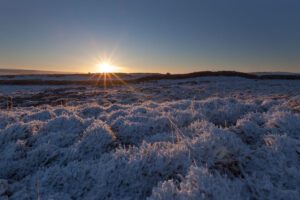
Mention the phrase “HDR photography,” and you will definitely get some cringes. HDR is one technique that you either love or hate. Fortunately for me, I have been using this technique to create many of my images ever since I picked up a DSLR, and it is a tool I definitely have grown to appreciate. Personally, I love taking photos during sunset and sunrise, which means most of the scenes I encounter are of extreme contrast and therefore high dynamic range. Depending upon the shot, it can be nearly impossible to create a tonally balanced image without doing HDR photography of some kind, although there are many different methods of blending exposures with different results, some more natural than others.
from Photography Life https://ift.tt/2CStmLL
Don't Follow the Herd: Should Landscape Photographers Explore?
It is an often debated topic these days in landscape photography. Should you shoot the same locations that everyone sees ad nauseam on social media? Watch this video to see one photographer's take on the subject.
[ Read More ]
from Fstoppers https://ift.tt/2SzhFiv
This Corpse Bride Cosplay Photography is a Halloween Masterpiece
from The Phoblographer https://ift.tt/2AE4HZV
Tips to transform everyday objects into magical still life scenes
I’m a still life photographer, but I like to think of myself as a person who tells magical stories about everyday objects.
The world provides more narrative opportunities than you might think. A coffee cup is pretty mundane, but that means it can help you tell any story you want. Maybe it belongs to an astronomer and reflects the stars, or a lunar eclipse. Or you may imagine it’s from an artist who distractedly put brushes and pencils in the cup. Kites or blimps could even fly by in steam clouds that rise out of it.
You don’t need extravagant props to create a fascinating still life—here are my tips for turning simple objects into magical conceptual scenes.
Embrace limited props
Magic and fantasy are more prevalent than usual in the series I’ve shared here, but most of the props I used were still books and glass bottles—nothing hard-to-find, fancy, or antique. In fact, lack of specific props is one of the challenges of still life that I find most appealing.
Without a lot props, my imagination gets to fill in the blanks! I can make a dragon with a piece of tracing paper, create a galaxy around a donut, or even invite a tiny unicorn to live on my bookshelf. With just two speedlights and a reflector, I can tell stories of outer space, magical potions, travelers, scientists, and wizards. The most interesting part is creating a fairy tale concept—all the technicalities are just algebra homework.
Always start with a sketch
The one piece of advice I’d give to anyone who wants to dive into conceptual still life is to always start with a sketch. I wish someone had told me that earlier! It allows you to think about your character and your story, to ask important questions, to add cute details.
There are many photographers that can think of an idea on-the-fly, but I’m definitely not one of them. Sketching and planning ahead is a core component of a still life photographer’s work. It also helps encourage inspiration, which, by the way, doesn’t stem from the work of other photographers. Inspiration grows from other media and your everyday life.
Look outside your wheelhouse for inspiration
We’re all compelled to seek inspiration in our own field, but what about literature and music, or podcasts and poetry? I have a photo that was inspired solely by one line of a song by The National. Open-mindedness is essential for inspiration.
Don’t limit yourself to photography knowledge: learn something interesting about biology, cognitive science, or dancing. Variety is the most reliable way to avoid creative block.
Amplify interesting details
Another important thing to help bring everyday objects to life is to get specific. Eliezer Yudkowsky calls it The Virtue of Narrowness. Think about what makes your object interesting— what about it mesmerizes you or gives you a warm and fuzzy feeling?
Let’s use a cup of tea as an example. Maybe you can see sunlight in your tea through a transparent cup. Then put it on a stack of books and shoot it in the backlight to show off its beauty.
Or maybe you like the taste and aroma? Surround the cup with spices and flowers to show your viewer how it feels like to have the flavour of these rose petals, vanilla sugar, and lavender in your teacup. Or perhaps you like it because it makes you calm and relaxed. In that case, you could combine it with a bedtime story and paper moon and stars above the steam of your tea. When you decide which specific property of the object you like the most, that detail will guide you through the rest of the process.
To me, still life is the most underrated genre of photography, so I encourage you to give it a chance. Look closely at the potential secret life of objects, their small transformations, and the subtle links between them. Still life turns you into an explorer in a world of inanimate objects.
Follow Dina Belenko
500px: 500px.com/arken
Patreon: patreon.com/dinabelenko
Instagram: @dinabelenko
Facebook: facebook.com/dinabelenko
from 500px Blog https://iso.500px.com/how-to-transform-everyday-objects-still-life/
Who Needs Photoshop to Create Spooky Effects?
The spookiest day of the year is upon us and it might have you in the mood to create something frightful. Photoshop, of course, offers nearly limitless creative opportunities to scare your social media followers, but what if you'd rather create something horrifying using practical effects rather than digital?
[ Read More ]
from Fstoppers https://fstoppers.com/bts/who-needs-photoshop-create-spooky-effects-300902?utm_source=FS_RSS&utm_medium=RSS&utm_campaign=Main_RSS
These trippy double exposure photos were made entirely in camera
Both double exposure and light painting photography open up a whole new world of creative possibilities. But photographer Jason Rinehart has combined the two techniques and created a set of photos that grabbed my attention the moment I saw them. These trippy (and slightly creepy) photos were created entirely in-camera, and I chatted with Jason […]
The post These trippy double exposure photos were made entirely in camera appeared first on DIY Photography.
from DIYPhotography.net -Hacking Photography, One Picture At A Time https://www.diyphotography.net/these-trippy-double-exposure-photos-were-made-entirely-in-camera/
How to Use Your Camera to Calculate the Speed of Earth’s Spin
Earth is spinning… and fast! It was during my first nights in astrophotography that it became very concrete for me. By taking pictures of the stars, one quickly obtains a change of star physiognomy that confirms the rotation of the earth. In this article, I describe how to use this phenomenon to measure the rotational speed of the earth with a simple camera.
To capture the maximum of light from the sky, the astrophotographer seeks to increase the exposure time to the maximum. By doing this, you quickly find that the appearance of the stars turns into a dash, depending on the focal length it takes few seconds of exposure to have this easily observable.
The principle is simple, the stars are very distant celestial objects, they are located at distances expressed in light-years. A light year is the distance traveled by light in one year, and when we remember that the light travels about 186,282mi/300,000km per second, we are quickly dizzy on the distances that this represents. As a result of all this, the stars are so far away that we can consider them fixed in the sky.
As we have observed, taking a picture of the sky in very slow pause or taking a succession of several photos of the sky, we clearly see the relative position of the stars change. We have just seen it, we consider the stars fixed in the sky, so their apparent movement characterizes very well the speed of rotation of the earth.
Without going into too much detail, the earth rotates along a North-South axis. In the northern hemisphere, this axis passes approximately through the polar star. Thus, the polar star is fixed and the stars around it trace a circular apparent path around it. That’s what we will measure.
By knowing the duration of observation (the duration of exposure of a photo or accumulation of several photos in sequence) and by measuring the angular distance traced by a star, I can easily calculate the speed of rotation of the earth.
To facilitate the measurement of the angle, I limit myself to a sequence of a few tens of minutes. As in the previous image, the dashes drawn by the stars are then very apparent.
Everyone will have his method and his favorite software, personally, I used an iOS application which has a tool to display the angle of a line. To better locate the polar star, I draw a circle centered on the latter.
The measured angle is 4.1 °, 0.072rad for a duration of 975 seconds. This gives us a rotation speed of 7.33×10-5 rad/sec. A quick search on the Internet tells us that the precise speed of rotation of the earth is 7.29×10-5 rad/sec. The difference is less than 1%.
Conclusion
Here, I showed you how to measure the rotation speed of the earth with an error less than 1% using a simple camera. This result is very interesting, especially since it can be improved by taking more care in measuring the angle.
For my part, I am all the more satisfied with the result that the method applies with standard photographic equipment (there’s no need for advanced scientific equipment) and that it allows us to apprehend this scientific truth: the Earth turns, truth otherwise difficult to perceive concretely with our senses.
About the author: Panhobby is the photographer behind PhotoPlanet360, a website dedicated to panoramic and 360-degree photos. The opinions expressed in this article are solely those of the author. You can find more of his work on his website, Facebook, Twitter, and Instagram. This article was also published here.
from PetaPixel https://petapixel.com/2018/10/31/how-to-use-your-camera-to-calculate-the-speed-of-earths-spin/
Nikon Z7 Teardown: ‘The Best Built Mirrorless Full-Frame Camera…’
After disassembling a Canon EOS R, Roger Cicala over at LensRentals just did a teardown of the Nikon Z7. What he found was one of the best-built cameras on the market today.
You can read Cicala’s full Nikon Z7 teardown article over on the LensRentals blog. We also shared a different teardown of the Z7 by Kolari Vision earlier this month, so be sure to check that one out too if you’re interested in more looks and thoughts on the Z7’s build.
The $3,545 Z7 is Nikon’s top of the line full-frame mirrorless camera while the $2,299 EOS R is Canon’s mid-level one — it will be announcing its pro-grade full-frame mirrorless sometime in 2019 — so it’s not quite fair to directly compare the builds of the Z7 and EOS R. But it’s an interesting look, nevertheless.
One of Cicala’s main findings in his teardown is that Nikon has ultra-weather-sealed the Z7 — there are weather-resisting gaskets everywhere you look, and finer sealing in certain parts than the EOS R and the Sony a7R III.
“In many places the plastic shell doesn’t just interlock; it overlaps, screws together and then is covered with rubber grip and adhesive,” Cicala writes. “That should not only give a superior weather seal, but it’s also probably giving some added strength to the assembly.”
There was similarly great sealing everywhere Cicala looked.
“If there’s an edge, there’s a weather seal,” Cicala says.
“This is not marketing department weather resistance. This is engineering department weather resistance,” Cicala concludes. “[T]his is as robustly weather sealed a camera as we’ve ever disassembled.
“I don’t believe in weather resistance myself. I believe like life; water will find a way. I believe in plastic baggies and rubber bands. I am, however, a great believer in the idea that if you claim to do something, then damn well do it right. This is done right.
“I’m just here to say this is a damn well-built camera, the best built mirrorless full-frame camera we’ve taken apart.”
from PetaPixel https://ift.tt/2QeuUnq
How I built my own DIY long-term weatherproof timelapse rig
In fall of 2017, I had the opportunity to capture the transformation of an empty plot of land turning into a high-tech vehicle test track. The bulk of the construction would take place for about a year. My friend and colleague, Ryan, and I were tasked with capturing that transformation into a timelapse video. We […]
The post How I built my own DIY long-term weatherproof timelapse rig appeared first on DIY Photography.
from DIYPhotography.net -Hacking Photography, One Picture At A Time https://ift.tt/2zixHof







